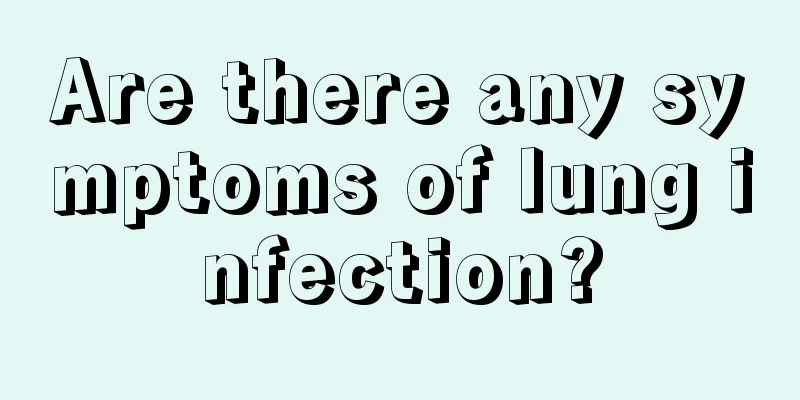Are there any symptoms of lung infection?

|
The lungs are the main processing center for people's breathing. The inside of the lungs is composed of countless bubbles, and the surface of the bubbles is covered with capillaries. The main function of the bubbles is to exchange oxygen and carbon dioxide in the blood. Therefore, lung diseases can affect breathing efficiency and cause serious damage to the body, especially lung infections which are the most harmful. Let’s take a look at the symptoms of lung infection. What are the symptoms? Difficulty breathing, temperature changes, cough, increased sputum volume and characteristics. Specific symptoms: 1. Pay attention to inhalation injuries, tracheotomy or intubation, aspiration, pulmonary edema, atelectasis, shock, surgical anesthesia, invasive wound infection, suppurative thrombophlebitis, etc. 2. Pay attention to breathing difficulties, temperature changes, cough, increased sputum volume and sputum characteristics. Clinical symptoms should be differentiated from burn toxemia or sepsis. 3. Physical examination. Patients with severe burns often have burns on their chests, making it difficult to obtain accurate chest signs. Therefore, careful examination should be performed to check for any respiratory changes or rales. 4. To identify the infecting bacteria, airway secretion cultures should be performed regularly, preferably bronchopulmonary lavage fluid cultures, to prevent contamination. 5. Chest X-ray. The diagnosis of most lung infections after burns depends on X-ray examination. Chest X-rays should be performed routinely after injury, and regular follow-up examinations should be performed thereafter. The X-ray manifestations of pneumonia can be divided into three types: small focal lesion, large focal lesion and lobar lesion, with small focal lesion pneumonia being the most common. Treatment options 1. Clear the primary lesion. Patients with inhalation injuries or severe burns of the face and neck should strengthen airway management, effectively clear airway secretions and necrotic and detached mucosa, and promote healing of airway wounds. In cases of hematogenous pneumonia, sepsis should be controlled and distant lesions should be cleared. 2. Based on the results of sputum culture or bacterial examination of the wound or blood, the drug should generally be administered intravenously. Antibiotics can also be inhaled by nebulization or an appropriate amount of antibiotics can be added to the lavage fluid. 3. If concurrent respiratory insufficiency occurs, treat it as respiratory insufficiency. |
<<: What are the acupuncture points that help remove freckles?
>>: What are the symptoms of severe cold?
Recommend
What to do if there is a prodigal son at home
It is said that children are the treasure of thei...
Symptoms and treatment of gastroenteritis, acute gastroenteritis is the most common
Gastroenteritis is usually acute, with a high inc...
What imported medicine is good for nasopharyngeal carcinoma
What imported medicine is good for nasopharyngeal...
Should I use salt or vinegar to soak clothes when they fade?
After wearing clothes for a long time, some of th...
What should I do if I can’t defecate after rectal cancer relapses and metastases after surgery?
What should I do if I can’t defecate after rectal...
There are red bloodshot on the cheeks
The appearance of red blood streaks is related to...
Total T cells are high
An increase in lymphocytes is usually related to ...
Where is the corresponding part of the ear in Traditional Chinese Medicine?
The human ear can develop many diseases, such as ...
How to remove scale from pipes
In fact, pipes are also a place where scale accum...
Chinese medicine secret recipe for treating bladder cancer
Bladder cancer can be divided into many categorie...
Does brain cancer cause drowsiness?
Most patients with brain cancer will love to slee...
How long does it take to recover from laser treatment of pigmentation
There are many factors that cause pigmentation. I...
How to treat anal fissure
Anal fissure is a relatively painful disease for ...
Are leg slimming bandages useful?
It is said that beauty lies in the thighs. Whethe...
What does the lumbar physiological curvature kyphosis mean
Everyone should be familiar with the role of the ...









